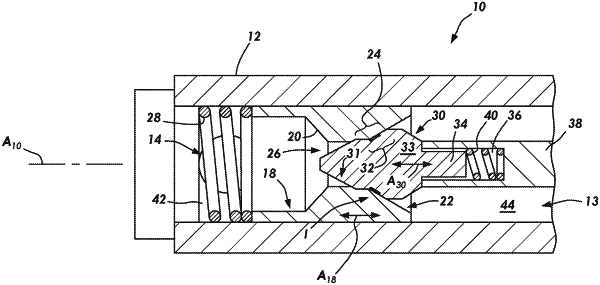| CPC E21B 43/123 (2013.01) [F16K 1/385 (2013.01); F16K 3/246 (2013.01); E21B 2200/02 (2020.05); Y10T 137/2934 (2015.04)] | 1 Claim |

|
1. A valve for controlling a flow of fluid comprising:
a body having a sidewall;
a chamber in the body;
valve elements disposed in the chamber that are selectively moveable with respect to one another;
sealing surfaces on the valve elements;
a barrier to fluid communication between the valve elements that is selectively formed by bringing the sealing surfaces on the valve elements into sealing contact;
a resilient member in biasing contact with an end of one of the adjacent valve elements distal from the barrier, so that sealing contact between the sealing surfaces is compliant;
a choke member selectively moveable between an interfering position and a fluid flow position, the interfering position being between the chamber and one side port to define a substantial barrier to fluid flow through the side port, the fluid flow position being spaced away from a periphery of the side port so that at least a portion of the side port is exposed to the chamber, wherein when the choke member is moved into the fluid flow positon when the sealing surfaces are positioned a threshold distance from one another so that a velocity of fluid flowing between the sealing surfaces is below a minimum velocity that causes erosion of the valve elements the choke member is coupled to a one of the valve elements and at a distance from the sealing surface on the one of the valve elements that is strategically dimensioned so that the choke member is moved into the fluid flow position after the valve elements become spaced apart from one another a distance greater than the threshold distance.
|